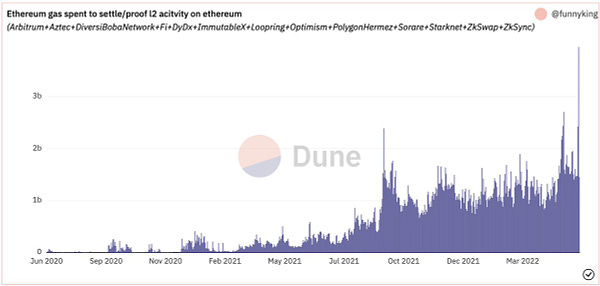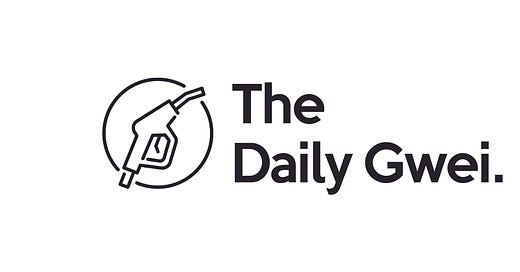There’s been a weird narrative circling around lately that layer 2’s are somehow parasitic to Ethereum and don’t drive value back to ETH. This couldn’t be further from the truth as every layer 2 needs to pay fees to Ethereum in ETH for its security and then 70-80% of that is burned directly driving value back to ETH. This is all verifiable on-chain and you can see from the tweet below that 3.95% of Ethereum’s daily gas limit was used to settle layer 2 activity yesterday.


People will sometimes bring up the fact that in the long-term layer 2’s won’t pay Ethereum for security because they’ll just become their own sovereign blockchain. I think this idea is silly for a number of reasons. Firstly, what a layer 2 is actually paying for it the ability to not have to worry about bootstrapping security and consensus via a validator set and paying for it which would essentially make them a layer 1 chain. What do layer 1 chains have to do to secure themselves? Pay out new issuance as inflation which dilutes all non-validators share of the network. Secondly, this new soverign chain would likely never be even remotely close to as decentralized and secure as Ethereum due so it just makes sense to pay Ethereum.
Of course, layer 2’s are going to have tokens but they won’t be used the same way layer 1 tokens are used. For example, I think that the recently launched OP token will be used to decentralize the sequencer (the software that processes transactions) and people will be able to stake OP to have a claim on fees paid (and possibly MEV too). But this form of “staking” is very different to something like Ethereum PoS as Optimism is not coming to consensus on anything - it is still outsourcing this job to Ethereum layer 1.
Lastly, current layer 1 blockspace usage by layer 2’s is still quite low - I mean the record is just 3.5% of total daily blockspace after all - but this will change gradually over time as more layer 2’s come online and as more activity flows to them. Eventually, layer 2’s should become the majority user of layer 1 blockspace as they will crowd out everyone else though I don’t think this will happen for a long time. I’m also curious to see what MEV looks like at layer 1 in this world - in theory, MEV shouldn’t exist at all on layer 1 if all the blockspace is just used for layer 2 activity!
All in all, the future is so bright for layer 2’s on Ethereum and I’m so excited to see how it all plays out over the next few years. I’m also very much looking forward to bad narratives around layer 2’s dissipating as they continue to prove themselves and users continue to get value out of them.
Layer 2 summer is here; it’s just not evenly distributed yet!
Have a great weekend everyone,
Anthony Sassano
Enjoyed today’s piece? I send out a fresh one every week day - be sure to subscribe to receive it in your inbox!
Join the Daily Gwei Ecosystem
All information presented above is for educational purposes only and should not be taken as investment advice.




